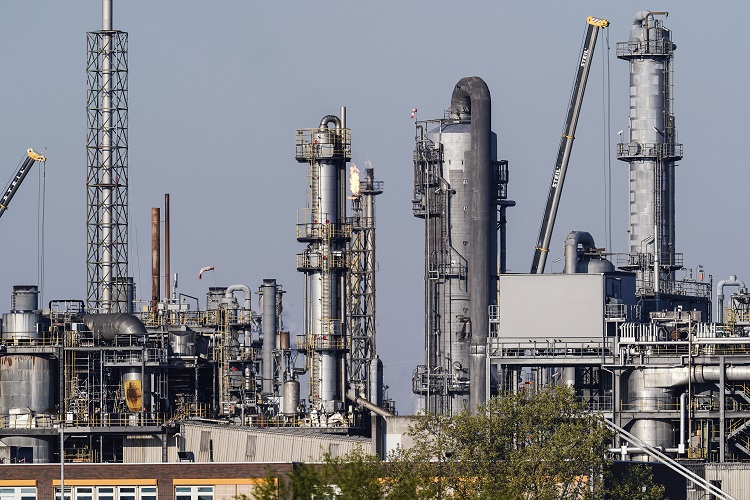The db x-trackers DBLCI OY Balanced ETF provides investors with broad-basket commodity exposure across the energy, precious metals, industrial metals and agriculture sectors.
Due to the volatile nature of commodities as an asset class, this ETF is best deployed as a satellite or small core-holding within a diversified portfolio.
Given its broad-basket exposure, this ETF offers the advantage of diversification within the commodity asset class. Utilising a capping mechanism which limits sector and commodity specific weights, the reference index will underweight certain commodity sectors such as energy, and overweight those like agriculture compared with an uncapped production based commodity index.
Broad-basket exposure to commodities has traditionally been considered an excellent source of portfolio diversification, exhibiting low correlations with bonds and stocks. In line with modern portfolio theory, adding this exposure to a stock and bond portfolio has historically produced lower volatility and increased risk-adjusted returns. That said, recent years have seen a notable increase in correlations with the major equity and bond markets, which peaked in the face of the market turmoil in 2008.
With the underlying index reflecting the return on commodity futures contracts, it is important to understand the risks associated with the futures market, and not least the phenomenon of contango. Contango occurs when a commodity's futures price is higher than its expected spot price. In this scenario, even if the spot price of a commodity is rising, investors could lose money. This fund’s reference index employs an “optimum yield” methodology that seeks to minimise the losses associated with rolling futures in contangoed markets.
Fundamentale Analyse
In recent years, the diversification and inflation hedging benefits historically attributed to commodities have been called into question. Beginning in 2005, commodities’ correlations with traditional assets began to rise before peaking in the market turmoil of 2008. It remains to be seen whether correlations will drop back towards their long term averages, or whether we have entered a ‘new economic normal’ under which old relationships no longer hold. Conventional investment wisdom also dictates that commodities provide a protection against unexpected inflation. While this benefit has been substantiated academically in the United States, a recent study has shown that energy commodities provide the most effective hedge against unexpected inflation in Europe.
Energy commodities comprise around a third of the reference index. Natural gas is primarily used to fuel power-generating plants, industrial complexes, and households. The recent widespread adoption of ‘fracking’ technology and the development of vast shale natural gas reserves in the US has increased supply and exerted downward pressure on prices.
The price of Brent crude oil is considered to be the primary indicator of supply and demand in the global crude oil market and tends to be driven by global economic activity, OPEC actions, and geopolitical events. Prices have tumbled since the summer of 2014, in the face of increased supply from US shale producers and slowing demand. But the long-term trend for Brent should remain positive, as it is a finite resource, has no immediate substitutes and is fundamental to the functioning of the global economy.
Long-term demand for agricultural commodities is driven by fundamental factors such as population growth and the production of bio-fuels. The World Bank estimates the global population will increase by approximately 2 billion from current levels to 8.9 billion by 2050, which ceteris paribus (all else held equal) would drive an increase in global demand for agricultural commodities. In addition to food and livestock feed, corn and soybeans are used in the production of biofuels.
Demand for gold stems primarily from its use as a precious metal (e.g. jewellery) and as an investment. Gold has historically been relied upon as a store of value in times of uncertainty and maintains an almost mythic attraction for investors to this day. In the 10 years between 2001 and 2011, the price of gold rose more than six-fold, fuelled by a weak dollar, rising inflation and widespread economic uncertainty following the 2008 global financial crisis. Since 2011, prices have tumbled in the face of globally low inflation, rallying stock markets and a relatively strong dollar. If, as anticipated, these macroeconomic conditions persist, the short-term outlook for gold looks bleak.
Indexkonstruktion
The Deutsche Bank Liquid Commodity Index Optimum Yield Balanced (DBLCI OY Balanced) is comprised of futures contracts traded on 14 commodities in the energy, precious metal, industrial metal, and agriculture sectors. Given that it is a futures-based index, it has three unique sources of return: spot price return, roll yield, and collateral yield. Roll yield is generated when selling expiring futures contracts and purchasing the next contract. Depending on the price of the next futures contract, the index could either experience positive roll yield when the relevant futures curve is in backwardation or could experience negative roll yield in contango markets. Collateral yield is generated via interest payments from U.S. Treasury bills, which are held as collateral backing the commodity futures positions. The index rebalances annually in November to target sector weights. In contrast to some other broad commodity index trackers, the db x-trackers DBLCI OY Balanced ETF tracks an index that attempts to address the dynamic nature of commodity futures curves by employing an “optimum yield” methodology that seeks to maximise the implied roll yield when moving from one futures contract to another. The index is resets annually to reflect the benchmark weights of; energy (35%), agriculture (30%), base metals (18%), precious metals (17%). Gold and corn are currently the largest single components of the index weighted 16% and 8% respectively.
Fondskonstruktion
The db x-trackers DBLCI OY Balanced ETF employs synthetic replication to deliver the index’s return to investors. The fund engages in an unfunded swap with parent company, Deutsche Bank. Under an unfunded swap framework, the ETF uses investors’ cash to buy a basket of securities (ie. substitute basket) from Deutsche Bank while simultaneously entering into an OTC total return swap agreement to receive the performance of the benchmark index of reference (net of fees) in exchange for that of the substitute basket. The substitute basket is currently comprised mostly of highly liquid US equities. Assets of the substitute basket are held in a ring-fenced segregated account by the custodian, State Street Bank Luxembourg, in the name of the ETF. In order to minimise counterparty risk, the swap is reset whenever its marked-to-market value reaches 5% of the fund’s net asset value. If the swap counterparty exposure exceeds this level or a creation or redemption occurs then the swap is reset to zero. The swap exposure may also be negative, which is equivalent to an overcollateralization of the fund. A negative swap value means that the fund owes the counterparty money. Deutsche Bank does not engage in securities lending with those securities in the substitute basket.
Gebühren
This fund charges a total expense ratio (TER) of 0.55% for this ETF, which is comparatively high for broad-basket commodity ETPs. Although there is no explicit swap fee, there is an additional fee of 0.80% ‘baked-into’ the proprietary reference index, which should be considered alongside the TER when determining the costs of holding the fund. Additional costs to investors associated with trading the ETF include bid-ask spreads and brokerage fees.
Alternativen
Investors have no shortage of choice when it comes to broad-basket commodity futures ETPs. In considering different products, an investor should look at the construction of the underlying indices, and specifically the differences in sector exposure and rolling methodology.
Investors seeking a cheaper alternative could consider the Lyxor Commodities CRB TR ETF. This ETF tracks an index which weighs the commodities by their perceived economic significance, trading frequency, and historical return contribution to the commodities space. The estimated holding cost for this fund is 0.65% (TER of 0.35% + swap cost of 0.30%).
Deutsche Bank also offers the same fund currency hedged into Euro, GBP and CHF and charges the same TER (0.55%) as for the un-hedged equivalent.
Die in diesem Artikel enthaltenen Informationen dienen ausschließlich zu Bildungs- und Informationszwecken. Sie sind weder als Aufforderung noch als Anreiz zum Kauf oder Verkauf eines Wertpapiers oder Finanzinstruments zu verstehen. Die in diesem Artikel enthaltenen Informationen sollten nicht als alleinige Quelle für Anlageentscheidungen verwendet werden.

















